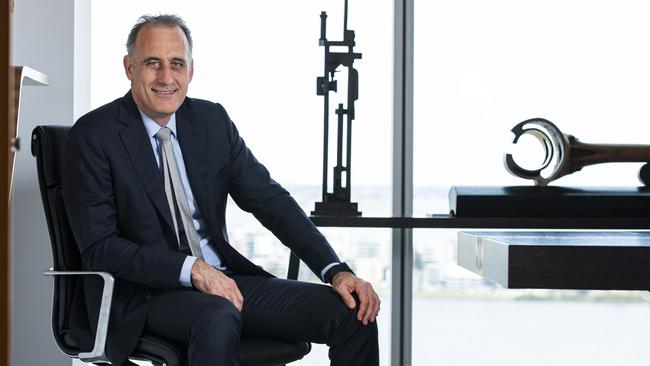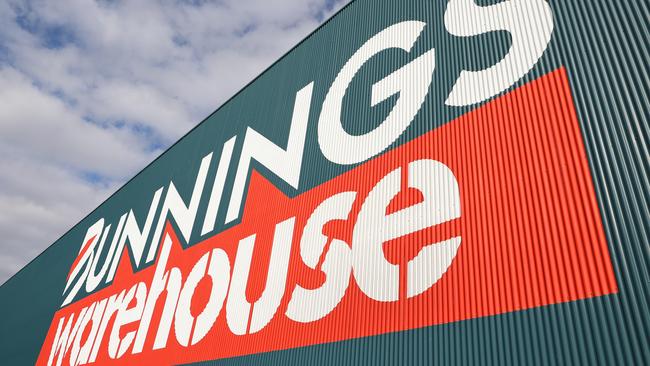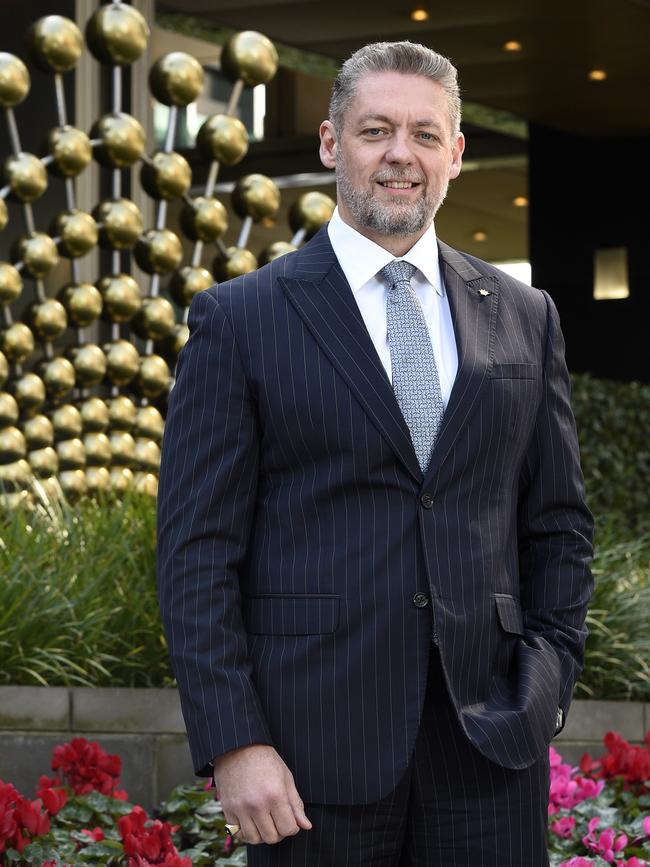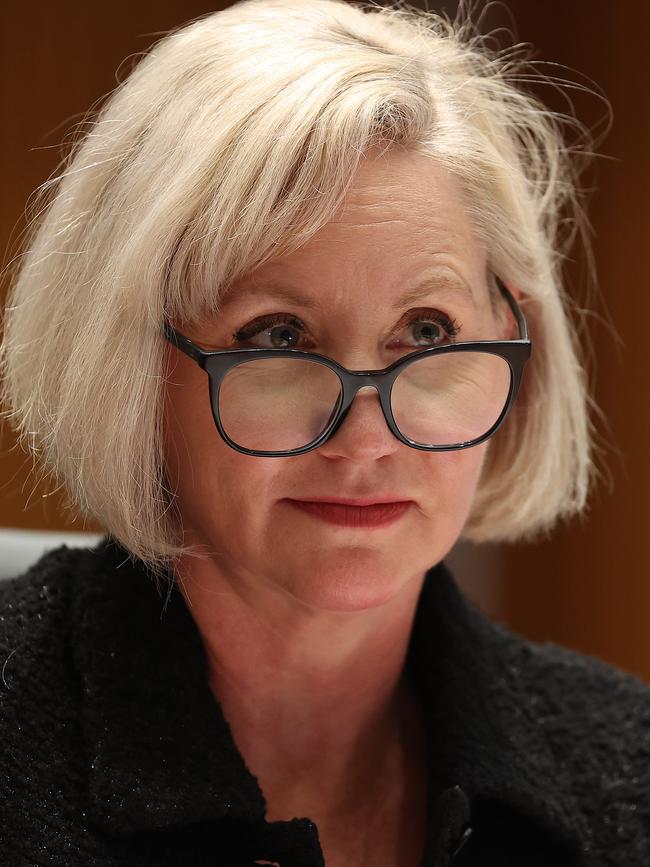
In just the past few years Scott has used acquisitions to push Wesfarmers into new areas such as health and lithium. And this has been partly underpinned by the massive cashflows generated by the flagship Bunnings businesses.
This is the model that Wesfarmers has built over time: Move into new businesses mostly by a foundation acquisition and steadily build new addressable markets from there.
However, one of the biggest changes Scott sees for his $56bn empire is set to come from extracting more value from data – particularly through his retail brands.
More structure has been put around Wesfarmers’ newly formed OneDigital, the business, the unit now headed by former Australia Post executive Nicole Sheffield.
It has three main functions – OnePass, the subscription-based e-commerce platform for retailing brands including Kmart, Bunnings and Officeworks.
It also includes OneData which provides the back-end analytics underpinned by shared data from FlyBuys. OneDigital is home for Catch, the loss-making e-commerce marketplace and retailer trying to take on Amazon.

The unit, which is getting substantial head office investment during the start-up phase, aims to joins the dots of all of Wesfarmers’ data and digital assets.
OneDigital will be confronting for many inside Wesfarmers, mostly as it involves working across the big silos of Bunnings, Kmart and Officeworks – all which operate with significant autonomy and far away from corporate headquarters.
But for a retailer, Wesfarmers is surprisingly new to digital, while others have been playing in the space for years. Retail juggernaut Bunnings only switched on its e-commerce site in 2018.
It only started getting serious about it through the Covid-19 pandemic as customers were stuck at home and spending online.
He sees the potential of the data from 1800 stores and 210 million digital interactions that customers have across the business, including Catch, every month.
After a false start with Catch, which is expected to generate more than $200m in losses this year and still in its digital infancy, Wesfarmers will need to show that it can beat the ruthless tech giants at their own game. It also needs to prove it can provide an edge without becoming a digital distraction for its retail brands.
‘Better together’
Scott is speaking to The Australian on the sidelines of Wesfarmers’ marathon strategy briefing in Sydney. He is happy to run through the points raised by this column during the week about whether some of Wesfarmers’ businesses would be better off on their own rather than a conglomerate.
Significantly, he says some 90 per cent of profits generated by the businesses are paid back to shareholders. At the same time there are physical limitations to growth beyond opening new stores or new distribution centres.
“A business like Bunnings generates a 70 per cent return on capital. I’d love to be able to invest more capital in Bunnings and get a 70 per cent return. But there’s a limit to how much I can keep investing.
“You have you step back and you say, ‘what are the things that are going to create value for our shareholders?’
“What’s really important in a conglomerate is that you’re always ensuring that your capital is allocated to areas that are going to deliver growth in the future.”
Healthcare is one of those growth bets and it is built around the $764m acquisition of Priceline owner API. The acquisition gave Wesfarmers the nation’s biggest pharmaceutical distribution network. It also delivered one of the nation’s biggest royalty programs – the Priceline sisters club with 8.3 million members.
Wesfarmers will build out a broader health business from Priceline, moving into areas such as cosmetics with a bidding war for Silk Laser Australia, while it also wants to move deeper into digital healthcare. The businesses operate in markets with an annual value of nearly $40bn, underpinned by an ageing as well as more health-conscious population.
Beauty and personal care markets are growing, while Botox (via Silk Laser) is becoming more widely used.
Scott runs through Wesfarmers’ evolution even in the past few years. Powerhouse Bunnings has expanded into commercial building supplies including Beaumont Tiles. Kmart has doubled down on value while “right sizing” the footprint of Target.
Kmart too has evolved to be as much a product development company as a retailer.
Elsewhere, the chemicals and fertiliser arm represents Wesfarmers’ biggest growth potential as it develops a lithium mining and processing joint venture in Western Australia with Chile’s SQM.
Nor is the Wesfarmers portfolio static with the $18bn exit over time of Coles supermarkets, and other businesses including railroad, insurance and coal mining. Indeed it was with much of the huge cashflows of the mining business that helped fund the early expansion of Bunnings giving the hardware chain critical mass.
“We are quite agnostic about the businesses we invest in. We have a lot of retail experience and capability but Wesfarmers isn’t a retail business. Actually, if you look at the heritage of Wesfarmers, we probably have more history and heritage in industrial businesses,” he says.
Now it needs to become a data driven business.
Crown cost
Nicole Rose, the boss of financial crimes regulator Austrac, has cemented her reputation for carrying a big stick, after extracting a $450m proposed settlement from Crown Resorts for allegedly allowing money laundering and other financial crimes to take place inside its casinos.
The quantum of the fine is going to hurt Crown’s new owner, Blackstone, and should serve as a warning of what is still to come for others facing separate Austrac legal actions: Sydney’s Star Entertainment and Adelaide Casino-owner Sky City.

Austrac and Crown reached agreement to settle on a penalty for Crown’s alleged breaches of anti-money laundering rules and failure of controls across its Melbourne and Perth casinos.
It follows Austrac’s damning 863-page legal filing that was packed with details of a casino operator allegedly doing its best to look the other way. The penalty needs to be approved by the Federal Court, where proceedings are under way. A statement of agreed facts was filed with court on Tuesday.
Even so, the proposed settlement means Crown is much further down the path of its cultural overhaul than the smaller Star.
For a point of reference, Austrac under Rose extracted Australia’s biggest ever corporate fine from Westpac Bank three years ago where the lender was hit with a $1.3bn penalty for money laundering breaches. Commonwealth Bank too was hit with a $700m fine for similar behaviour.
With Crown valued at nearly $9bn following its takeover by Blackstone last year, it will feel the pinch of the fine a lot harder than the much bigger banks that generate annual earnings in the multiple billions of dollars.

But for Crown’s new private equity owner, Blackstone, it’s a case of paying for the sins of the old Crown, the casino that was an ASX-listed company and controlled by James Packer.
And the expected settlement of the Austrac legal action allows Blackstone to look forward and start implementing its plans for the new Crown.
There are two more Victorian government legal actions to come, stemming from the state’s royal commission but these are likely to be smaller in terms of size and impact. These are expected to be finalised in the coming month.
Blackstone’s hand-picked Crown chief executive, Ciaran Carruthers, was involved in the oversight of the casino’s negotiations with Austrac, underscoring the importance of the legal action to the business.
Indeed, on Tuesday rather than celebrating the Austrac breakthrough, he reminded staff that the money laundering breaches were “unacceptable” and represented “illegal behaviour”.
“There is no place for money laundering or terrorism financing at Crown or anywhere within our communities,” said Carruthers, a highly experienced global casino boss.
Since acquiring Crown, Blackstone has kept a low profile and spent big replacing the casino’s ageing technology in order to improve customer tracking and risky areas.
Once all of Crown’s legal actions have been finalised, the New Crown is expected to start looking outward again.
It plans a major revamp of its massive Melbourne complex. There will also be a focus on facilities beyond gaming – hotels and conferences – across all of its properties including the newly opened Sydney casino.
johnstone@theaustralian.com.au






Rob Scott is quick to point out the living and breathing evolution of his 110-year-old retailing-to-mining empire and its ability to reinvest and find new business lines, is the secret to creating longer-term value for Wesfarmers.